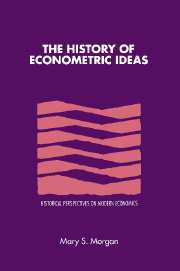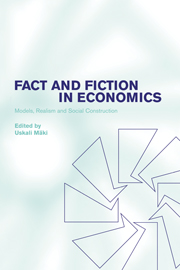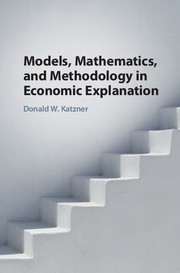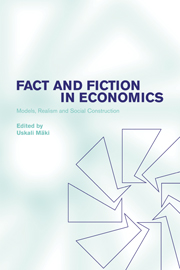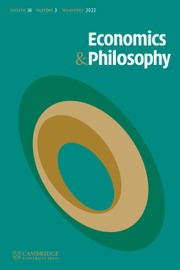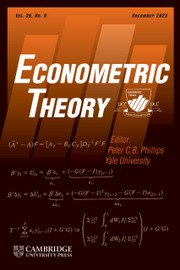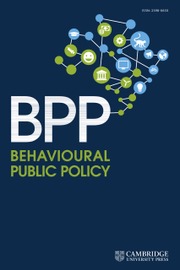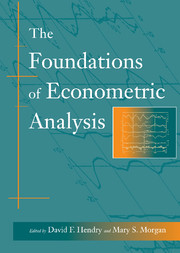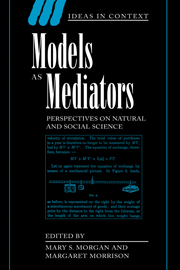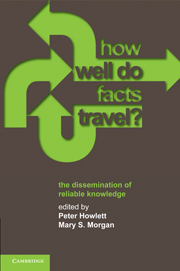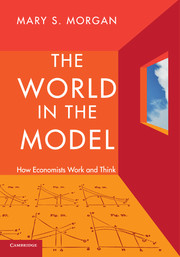The History of Econometric Ideas
The History of Econometric Ideas covers the period from the late nineteenth century to the middle of the twentieth century, illustrating how economists first learned to harness statistical methods to measure and test the "laws" of economics. Though scholarly, Dr. Morgan's book is very accessible; it does not require a high level of prior statistical knowledge, and will be of interest to practicing statisticians and economists.
- First time paperback of a very successful hardback - over 1000 sold in under a year
- This is the first history of the development of econometrics and its contribution to economics
- Non-technical and accessible to the non-specialist
Reviews & endorsements
"This book is the first true history of econometrics. It will be used as a reference on specific points, where its accuracy and accessibility are a delight...It also provides food for thought about a whole range of issues that other scholars will take up. This book is a gem in its individual chapters, but the whole is much more than the sum of those parts. The writing is level, clear and restrained; the suggestions are insightful and warranted." Neil de Marchi, Duke University
"Brilliant, almost entirely literary history of the development of econometrics." Cooperative Economics News Service
"Morgan has written a fine book....Morgan's compelling story recaptures the problems and the promise of econometrics past and forces us to think about econometrics future--not about the asymptotic distribution of the latest estimator, but about the relation of economic theory to economic reality." Journal of Economic History
"Morgan offers an excellent review of the origins of this debate and the evolution of the opposing views. A fine effort and a pleasure to read, this is a splendid analysis of the history of econometrics and an important contribution to the literature." Vibha Kapuria-Foreman, History of Political Economy
"Overall, the book is well written and adequately documented and provides a fascinating account of selected major developments in econometrics before 1950....Since the history of ideas is usually controversial and optimal criteria for including ideas in a menu do not exist, Morgan is to be congratulated for presenting us with a memorable and tasty dinner of econometric ideas." Arnold Zellner, Journal of Political Economy
Product details
April 2011Adobe eBook Reader
9780511876233
0 pages
0kg
This ISBN is for an eBook version which is distributed on our behalf by a third party.
Table of Contents
- List of figures
- Preface
- Acknowledgements
- Introduction
- Part I. Business Cycles: Introduction to business cycles
- 1. Sunspot and Venus theories of the business cycle:
- 1.1. Jevons' sunspot theory
- 1.2. Moore's Venus theory
- 1.3. The decline of periodic cycle analysis
- 2. Measuring and representing business cycles:
- 2.1. Juglar's credit cycle
- 2.2. The statistical approach of W. C. Mitchell
- 2.3. Persons and business barometers
- 2.4. The business cycle research institutes
- 2.5. Statistical economics and econometrics
- Addendum: graphs and graphic methods
- 3. Random shocks enter the business cycle scene:
- 3.1. The experiments of Yule and Slutsky
- 3.2. Frisch's time-series analysis
- 3.3. Frisch's rocking horse model of the business cycle
- 4. Tinbergen and macrodynamic models:
- 4.1. The Dutch model
- 4.2. The first League of Nations' report
- 4.3. The second League of Nations' report
- 4.4. the critical reaction to Tinbergen's work
- Part II. Demand Analysis: Introduction to demand analysis
- 5. Narrowing the data-theory gap in demand analysis:
- 5.1. Difficulties in early statistical measurements of demand
- 5.2. Static theory and time-series data
- 5.3. Econometric models of demand
- 5.4. The data-theory gap under review
- 6. The evolution of identification questions:
- 6.1. The emergence of correspondence problems
- 6.2. Identifying the demand curve
- 6.3. The identification of two relationships
- 6.4. Back to the single demand curve
- Part III. Formal models in econometrics: Introduction to formal models
- 7. Errors-in-variables and errors-in equations models:
- 7.1. Errors and the single equation
- 7.2. Errors and interdependent relationships
- 7.3. Postscript: measurement errors and the method of instrumental variables
- 8. Haavelmo's probability model:
- 8.1. Statistics without probability
- 8.2. Signs of change
- 8.3. Haavelmo's probabilistic revolution in econometrics
- 8.4. The new consensus
- Conclusion
- References
- Index.

